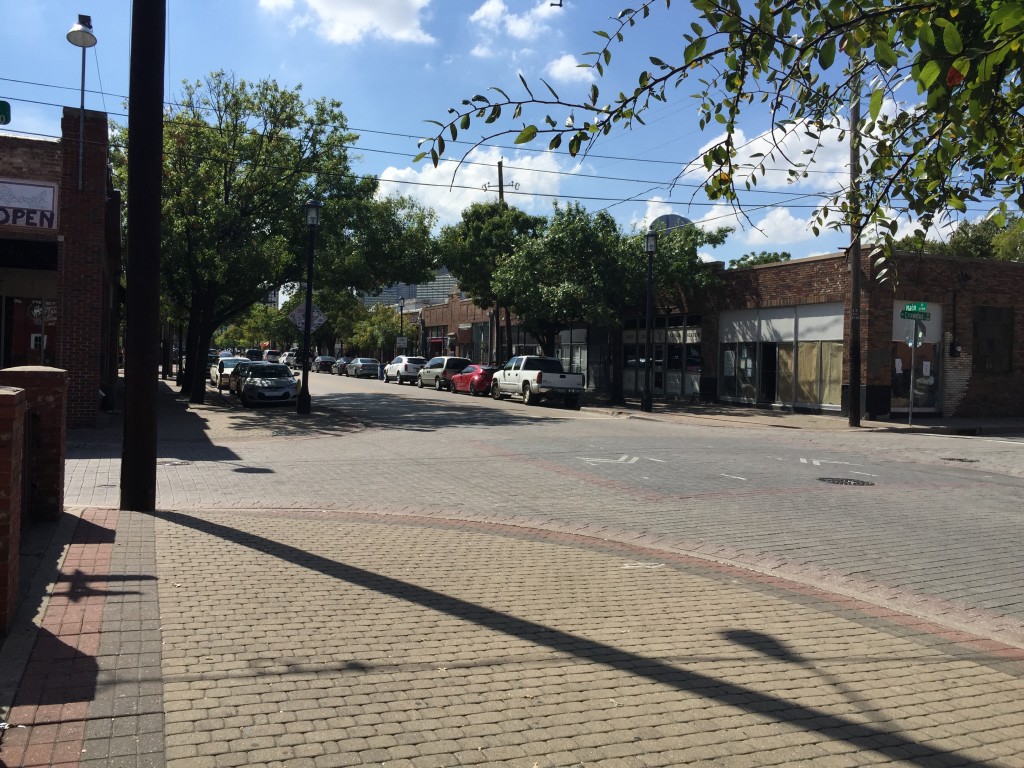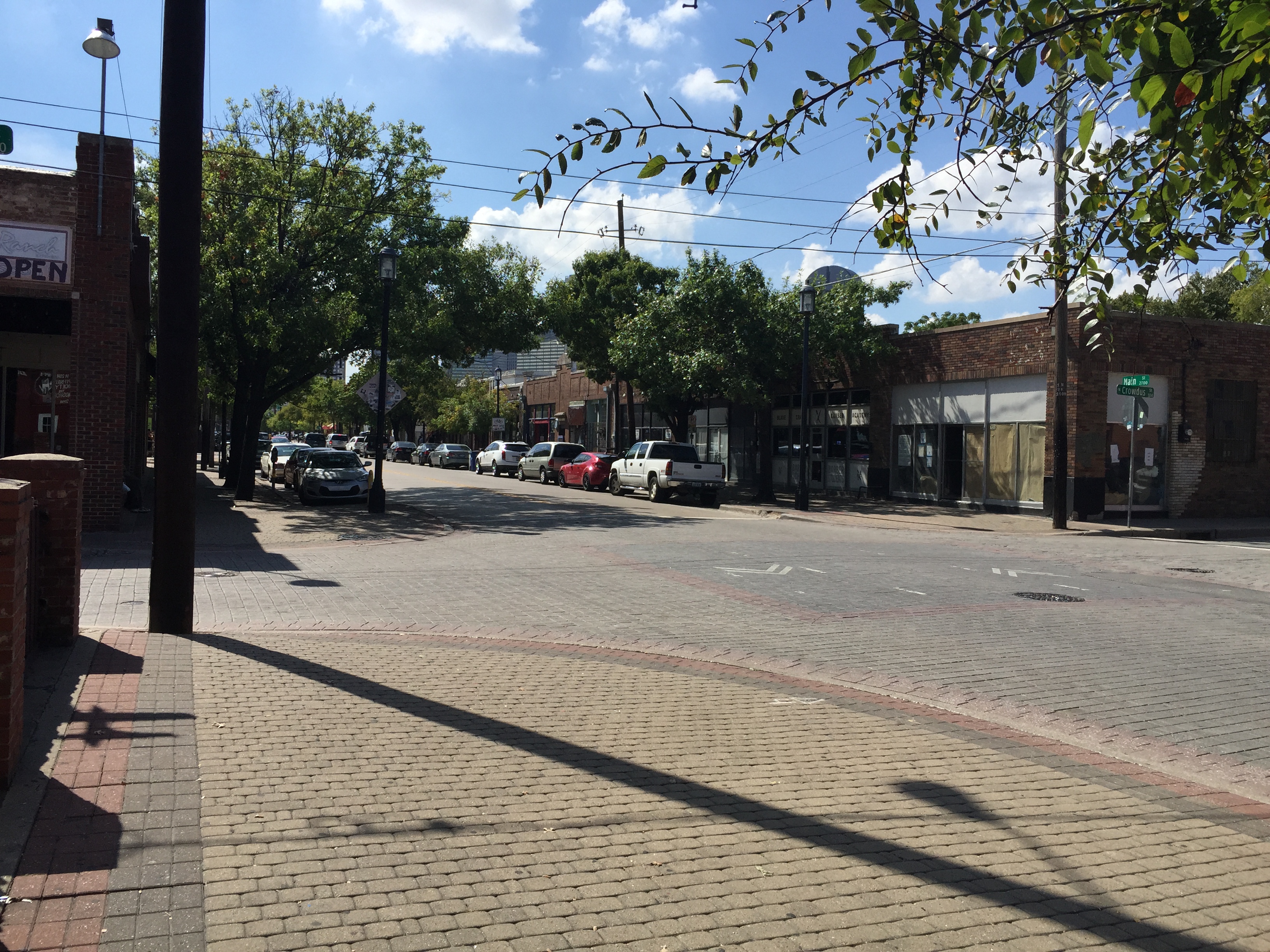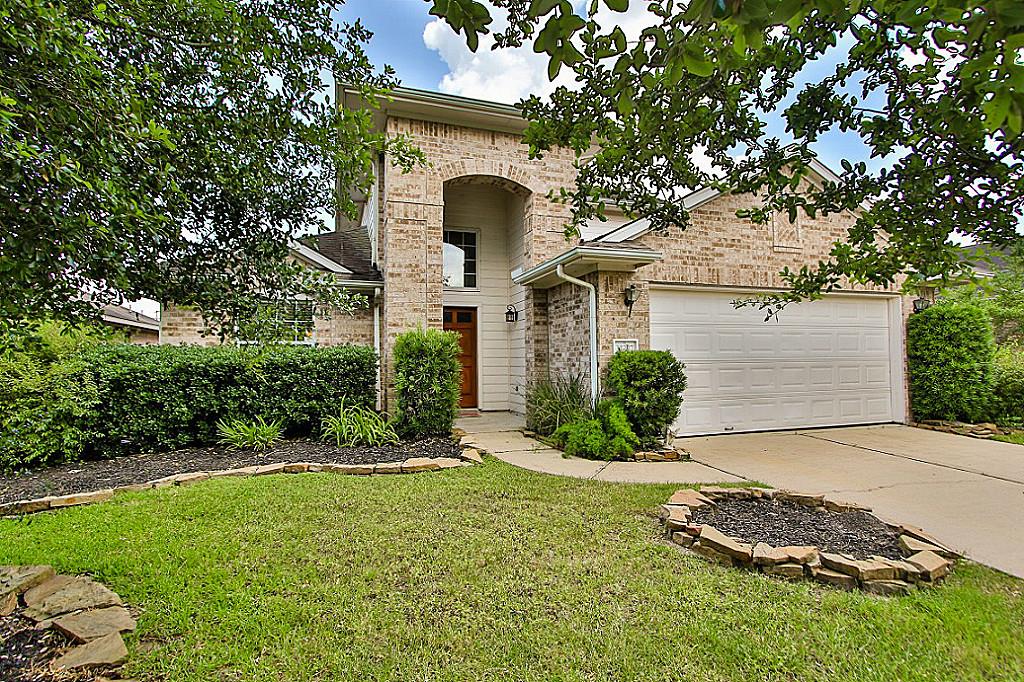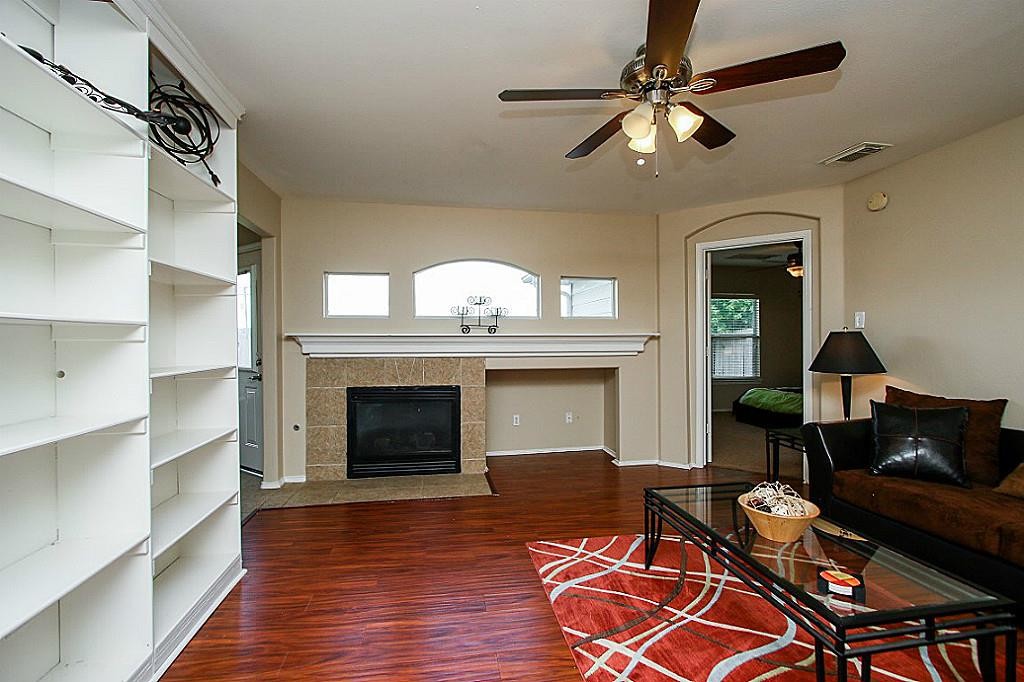Over the years, I’ve been asked by several long time clients about investing in the Dallas Fort-Worth market. At the time, the main reason for their interest was location diversification. While I always thought it a good idea to diversify holdings over markets with different characteristics, I thought there wasn’t a significant difference in location characteristics to achieve any meaningful diversification.
Then oil prices dropped in the $40s and calls about investing in DFW became more frequent. Now the equation has changed from “hey, let’s invest in another city” to “Dallas is Texas growth with less ties to the oil business”. The case for diversification took a whole another dimension. So, I decided to explore the DFW market in greater detail to see if there were any investment opportunities there for our clients. And since nothing beats “boots on the ground” I made the drive north on Interstate 45 and spent a few days exploring different areas, looking at properties and trying to get a feel for the state of the market.

The Process (of elimination)
Before I discuss my findings and impressions of the DFW market, I would like to take some time to explain our methodical process for assessing a new market. This would be very helpful to you if you’re considering investing your hard earned capital in a new market. My process for assessing a new market can be summed up in two steps:
- Focus your attention on the areas that fit the criteria
- Analyze those areas at a deep level
The first step is crucial especially when you’re analyzing two very large metroplexes like Dallas and Fort Worth. We went about it by being clear about our universal criteria for long term investment properties:
- Located in the best school districts
- Recently built (10 years old or less preferably)
- For single family homes at least 3 bedroom 2 bath 2 car garage and 1600+ sf (it is still Texas after all)
- Safe neighborhoods with nice amenities
- Decent return on invested capital
- Good growth prospects
The first one (school district quality) is the ultimate elimination criterion. We’re just not interested in areas that aren’t zoned to great schools. So the first task at hand was to find out which were the school districts I should focus my attention on. I did look at online data for school quality but nothing beats local knowledge. This is where a long term reader of Investing Architect generously gave of his and his wife’s time to point me in the right direction. Their suggestions matched what I subsequently researched online and it resulted in a much greater focus. Therefore after this all important step was finished, I had focused my attention on areas zoned to a handful of school districts in the North/Northeast suburbs of Dallas and Fort Worth.
The next step was to research the local MLS for recently built, 3/2/2+ single family properties to get an idea about prices. Based on our pricing benchmarks from the Houston market, we decided to focus on properties priced from the mid 100s to the mid 200s. In my experience, you will experience diminishing returns and higher price to rent ratios as you move north of those prices.
Next, properties were grouped by area and we drove by each area to assess the overall neighborhood quality and made extensive notes about each neighborhood.
Then, we performed a detailed cashflow analysis on all properties we scouted to get an idea about rent levels, operating expense and price to rent ratios.
Finally, we retrieved and analyzed detailed demographic and psychographic reports to assess growth prospects through population growth, income levels, and psychographic behaviors of residents in the different areas. I will attach a copy of these reports for you at the end of this article
The findings
First and foremost, the understatement of the year is: The DFW area is experiencing tremendous growth. You don’t have to have a PHD in economics or population patterns to figure that out. You can feel it by simply driving through these areas where entire towns are being developed at the same time. While homes are built at a break neck pace, roads are being expanded, grocery stores, schools, fire stations built. There’s a feeling of great momentum and thrust upward. Driving through downtown you see headquarters and Class A office buildings of Telecom, IT, tech, health and oil companies aplenty and you get a sense of the economic engine that’s driving this growth. Now before you point out that these are just “gut feelings” unsupported by data, don’t rush. I will provide plenty of data in the paragraphs that follow. But there’s something to be said about the fact that economic vitality is something that you can feel simply by driving around and observing what’s going on in an area. So, right off the bat, the DFW market had the right vibe for a prospering growth market.
In driving through neighborhoods in Allen, Frisco, McKinney, Fort Worth, Grand Prairie (to name a few) and walking through properties I was impressed by the construction quality and overall neighborhood plans. I saw brick and stone exteriors, granite counters, laminate or wood floors pretty routinely. I also saw lots of neighborhoods with walking trails, parks, lakes, fitness centers etc. Another quality box checked!
The demographic and psychographic reports had even more good news in store.
Dominant_Tapestry_Map_Fort Worth
Demographic_and_Income_Profile Fort Worth (1)
Up and Coming Families – Segmentation
Professional Pride – Segmentation
For a snapshot of the analysis we did for Forth Worth, above are the demographic and income profile as well as psychographic “tapestry” reports for the area. Median incomes between $65,000 and $127,000, robust population growth between 3.84% – 5.5% (depending on radius), and top two psychographic groups being up and coming middle class families and upper middle class professionals is a very good combination for a market in which to invest.
Now for the moment of truth: The numbers. First the good news: Operating costs in DFW are lower than what we typically see in the Houston market. Property taxes in the DFW area were as much as 30% lower than in comparable Houston properties. The typical tax rate before exemptions in DFW was 2.5% while in Houston it would be closer to 3.25-3.5%. Same story with homeowner association dues – Typical annual fees in DFW were $300 a year while in Houston we average $450-550 a year. Finally, leasing fees are lower in the DFW market averaging about 70% of one months’ rent. Now for the not-so-good news: Rents for comparable properties are 10-15% lower in DFW. In the properties we analyzed, the monthly rent averaged about 0.85-0.9% of the purchase price. So essentially, a property purchased for $175,000 will bring in $1500-1600 in rent whereas the same property in the Houston market would bring in $1700-1725.
After thoughtful consideration of the factors at play, a couple of things become clear. First, since the 2008 recession, property values have risen at a faster clip than rents. The appreciation rate is good news for long term returns but not so good news for in-the-meantime cashflow. Second, I wondered what was the reason for this disparity in growth rates. Or put differently, why does a Tenant in Greater Houston pay a higher rent for a similar property than their counterpart in DFW? Logically, your mind first jumps to income levels. So we decided to look at income levels in the submarkets we researched. In some cases, average and median incomes were even higher than those in Houston and in all the cases they were comparable. So if income wasn’t the deterrent, what was? The best educated guess I’ve come to so far is that management companies and leasing agents in the DFW area have been shy to price rent increases into new inventory and have relied on backwards-looking average rents. That could be good news for investors purchasing property in areas with lower inventory levels because there’s a possibility to boost returns and get higher than backwards-looking average rents. But, in the end, the analysis has to be performed with what is, not what could be.
At the current moment, based on our findings, the DFW market offers cash on cash returns of 5-6% and internal rate of returns of 15-17% for well located, recently built properties that employ a self management system with 20% down payments. If we have to account for professional property management, cash on cash returns are in the 2% range (so basically, break even) and internal rate of returns of 10-11% (assuming 3% annual appreciation). The compensating factor is that appreciation is likely to average much more than 3% so actual returns will likely be higher once it’s all said and done. But again, we analyze for what is erring on conservative side – not best case scenario investing.
To conclude, I was very impressed by what I saw in DFW – I think the market has excellent potential for growth. So I am keeping a keen eye on the market for any opportunities I can pass on to my clients both in the single family and small multifamily space.
P.S As heartbreaking as it is for this Houstonian to admit, I had the best brisket ever at this place in Deep Ellum called The Pecan Lodge. It was so good, I think they should classify it as a dangerous substance. 🙂











